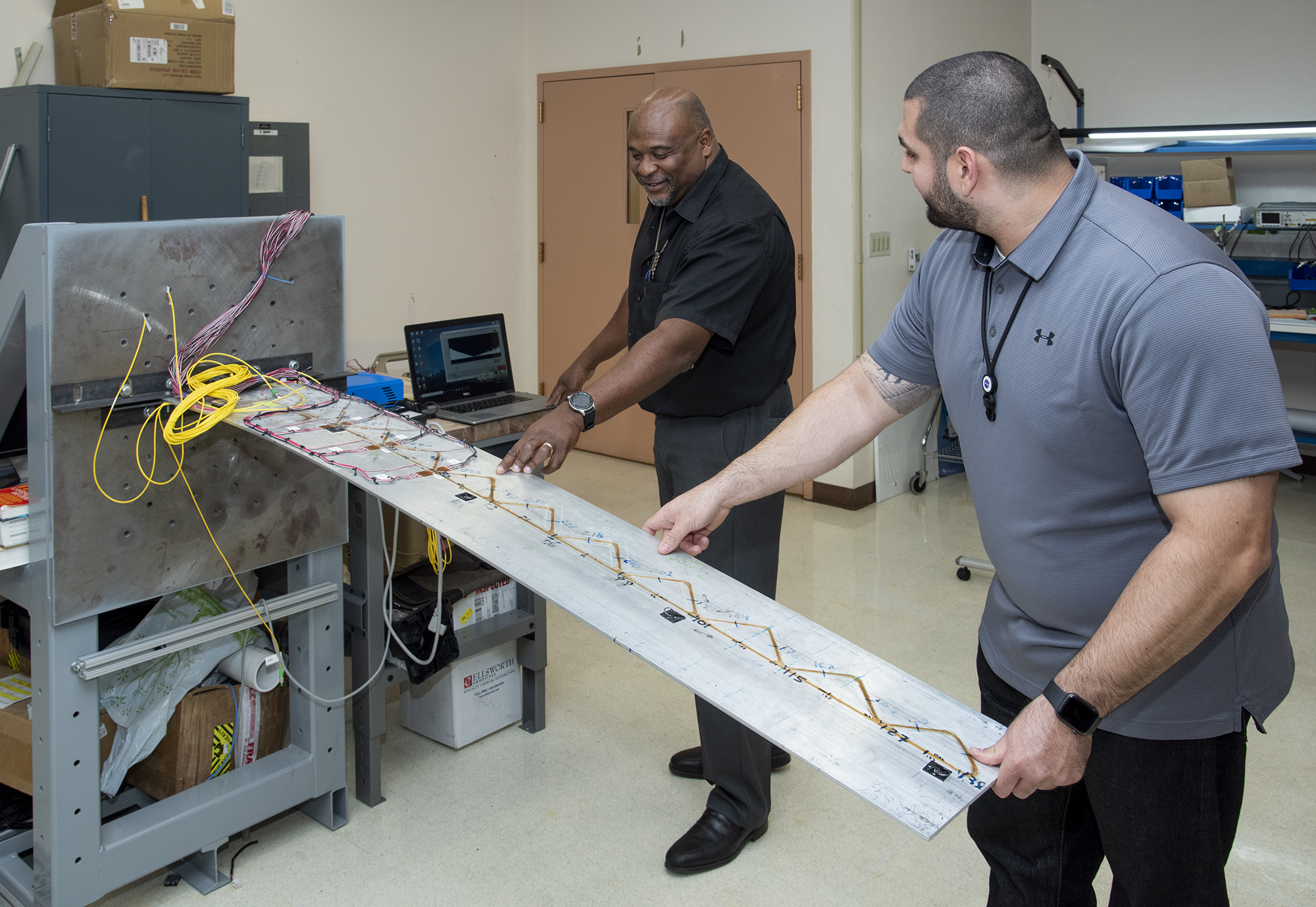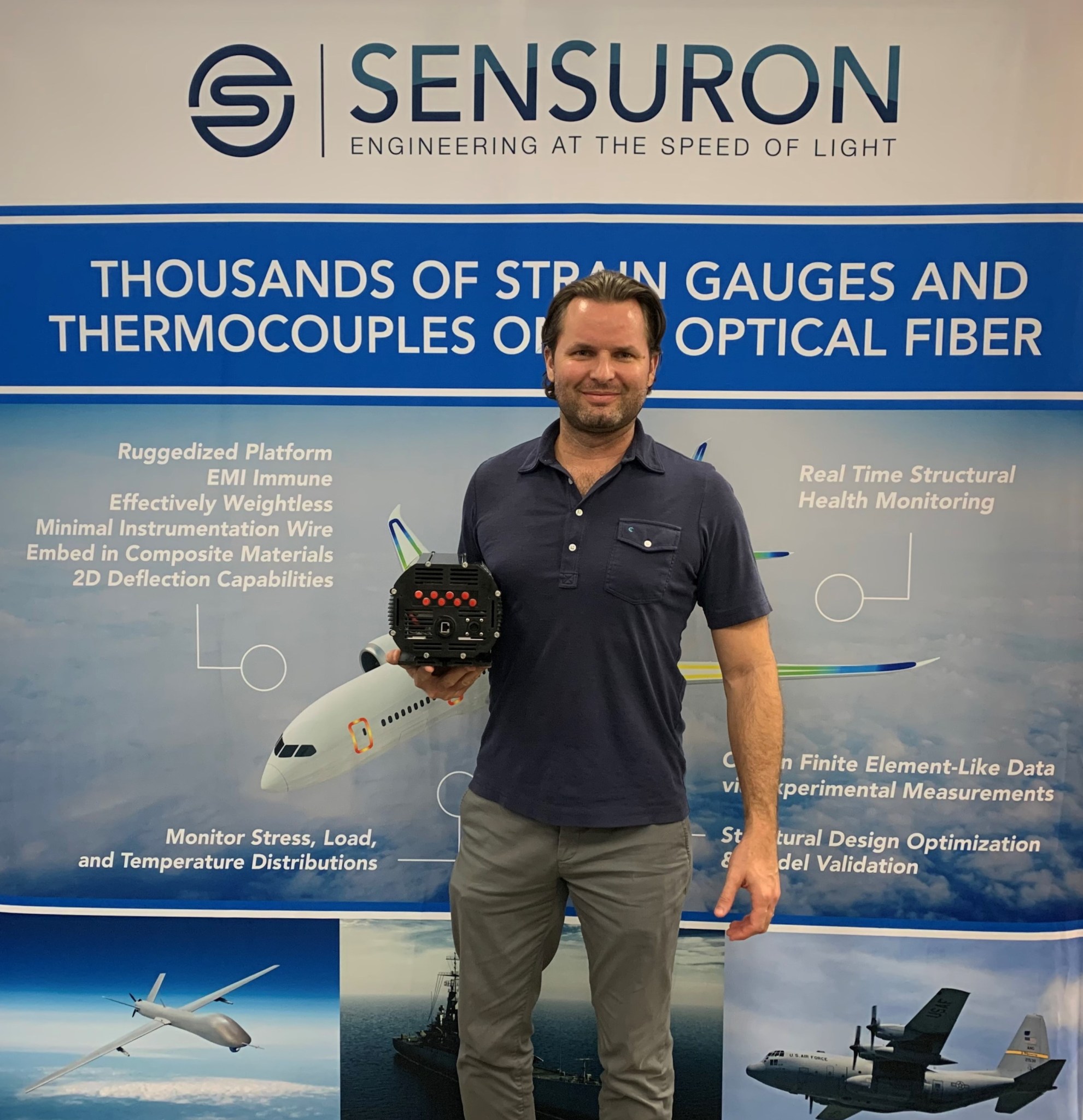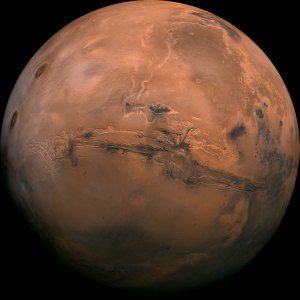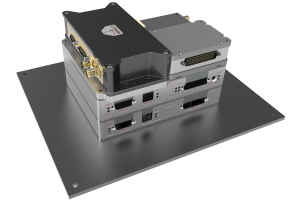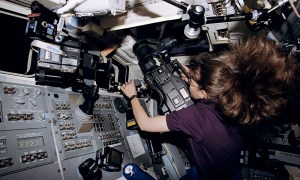Part of NASA’s mission is to share its technology for the benefit of the American public. For NASA Armstrong Flight Research Center, the sharing of its Fiber Optic Sensing System (FOSS) is helping two businesses change lives.
Originally developed to watch stress in test aircraft, FOSS helped create two private companies and is being used to monitor structural integrity in bridges, auto parts, and rockets, and allowing doctors to track instruments inside the human body with less harmful radiation.
FOSS uses a hair-like optical fiber, up to 40 feet in length, to provide up to 2,000 data points. The system processes information every quarter inch along the fiber at rates up to 100 times per second to measure strain, shape deformation, temperature, liquid level, and operational loads.
In the past, collecting and transmitting such data required miles of wires, harnesses to keep those wires in place, and bulky sensors ‑ all of which add weight and complexity to aircraft systems.
FOSS had its origins in a system developed at NASA Langley Research Center in Virginia. That system, however, took up an entire table, and had limited performance, until NASA Armstrong engineers and scientists took a turn.
“We took the base design at Langley, miniaturized it, enhanced it, added new algorithms to make measurements real time, went and flew it, and we’ve been doing that development work ever since,” said Allen Parker, leader of NASA Armstrong’s FOSS team.
Early in the FOSS development effort, Parker needed custom hardware built on a small budget. He found a company called 4DSP, then owned by Pierrick Vulliez.
“Vulliez and his company was able to design hardware for us based on our requirements,” Parker said. “We built our first system around that and had great results. Those results brought more funding to do better systems.”
In 2011, 4DSP entered into a licensing agreement for FOSS.
“The prospects of bringing this technology to market and making it available to industry were too appealing for us to pass up,” Vulliez said at the time.
Vulliez sold 4DSP in 2016, but created a new company, Sensuron, to continue to create products based on the FOSS technology.
“We ended up dedicating a small team to the technology and started to develop our own instruments with the guidance from NASA,” said Justin Braun, CEO of Sensuron. “We talked to them (NASA) about any pitfalls that they had experienced with their existing hardware, and we created new hardware that improved upon that.”
Sensuron’s products are now sold around the world. Most of their customers are in the aerospace and defense industry, but there are also other customers such as civil engineering, automotive, and energy.
“The underlying physics of the FOSS technology has an elegance and beauty to it that makes it interesting to work with,” Braun said.
Interest from the medical industry prompted Sensuron to spin off another company, The Shape Sensing Company, which pairs FOSS-derived technology with 3D imaging technology.
When integrated into medical devices, fiber optic provides surgeons and robotic platforms with 3D perspective on the location and guidance of surgical tools, according to The Shape Sensing Company.
“There’s a high interest in the medical field for navigational aids during catheter related procedures,” Braun said. “It offers a doctor the ability to visualize in real time the location of the catheter during the procedure. It also allows less fluoroscopy, which means less radiation exposure for both the patient and the doctor during these procedures.”
NASA Armstrong continues to develop FOSS for new applications including monitoring the health of spacecraft, as well as measuring levels and temperatures of liquid fuel tanks during spaceflight. That work has drawn interest from within NASA and from major commercial space companies.
“Whether it’s Artemis, Mars, satellites, you name it – there’s a lot of applications,” Parker said. “There’s a lot we can offer in that regime.”

























